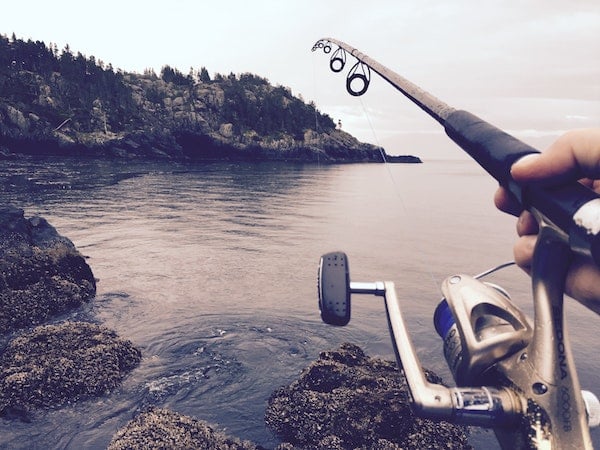Published on
Marketing Student-Centric Pathways in the Digital Space

As we shift into a new normal, learner demographics are changing and so is the way in which they engage with prospective colleges and universities. Institutions will need to become experts in the digital environment, as more students are looking online for the programs they need to get back into the workforce. In this interview, Jeff Fanter discusses the importance of expanding your learner demographic, engaging learners digitally, and marketing to the right audience.
The EvoLLLution (Evo): From the college’s perspective, why is it important to create access to broader or even new learner demographics?
Jeff Fanter (JF): The pandemic certainly opened our eyes and reached people in different ways. It made them aware of the opportunity that comes with circumstances changing or things shutting down; it doesn’t mean you need to stop your educational journey. For Ivy Tech Community College, we have limited face-to-face options—everything is online. I think that things will change based not on what the institution can offer but what the student desires. This way, they can consume their education in a way that best suits them, and they can easily progress through their journey. That’s just the delivery of education.
Evo: Do you think we saw a change in the way institutions need to serve and communicate with learners—or was it an acceleration of trends that were already slowly progressing?
JF: I’d say it was a change on the student services side. It was an acceleration of everything, from the way we deliver education, to the academics and the classroom setting. I think we all discovered that there are new and better ways of learning and teaching in different environments.
On the student services side, it changed how students ask questions and how faculty and advisors answer those questions. We can’t expect a student and faculty to meet face-to-face anymore; it has to be done virtually, and we’re going to have to accommodate that. It’s not a 9-to-5 world anymore.
For example, last night we had a Zoom call with a group of students collaborating on a workforce development project involving the state of Indiana. We’re a state-wide community college, so students from all over the state come to this call with our president and provost. We had financial aid specialists, enrollment management specialists and workforce alignment specialists. People were speaking through video or in the chat box, and this was at six in the evening. That’s when people are home and it’s more convenient for a large group to get together.
It makes a huge difference for our students and we need more of it. We’ll have to reach out to students more, and that’s what changed—the student services side is going to change.
Evo: How is marketing in the digital environment different than some of the more traditional marketing tactics that higher ed institutions have leveraged in the past?
JF: It’s been interesting to watch through the pandemic. In general, when you look at TV, ads were pulled and redeveloped to fit the current situation we’re in. You could no longer have a commercial with people in a store without masks on—or you had to consider advertising a store at all when customers can’t get to it. There was this transition shift where ads became digital images thanking their employees for their work during this trying time.
The beauty of digital is that it takes about two days to make, and your whole campaign can shift. We were able to quickly change all of our advertising to cover the different education delivery methods. And it was important to the potential consumer when the pandemic hit that we show them that Ivy Tech is still running. In that short period of time, we were able to shift and open for business in a week. We want to be known as an online institution right now because that’s what people are looking for. Now, that’s not only what Ivy Tech does, but within a month or two, we were thought of as an online school.
Digital has allowed us to quickly shift who we were into an online school while continuing to educate students. Other educational means allow you to do that, but they take too much time from a production standpoint to get there, too high a cost to make that shift. Digital allowed us to shift right away. From what we saw in our application pool, it worked and it helped. The other beauty with digital is that you can track it all the way down to an ad. For example, we know that 22% to 25% of our fall applicant pool came straight from digital ads. That’s pretty high. Usually, you might get 15%. Why is it so much higher? Well, recruiters and other people trying to generate leads and opportunities weren’t out doing that. That just shows you the power of digital. Right now, we’re tracking a 26% for spring applicant pool pull coming from digital. That means over a quarter of our applicants are coming from one source of advertising. You can’t track that with any other form of advertising. And no one individual is going to make up a quarter of all your applicant pool. And we’re very pleased with that. We were able to shift our messaging in a matter of two days, and it made all the difference in the world for us.
Evo: What are some tactics or structures that you’ve seen really succeed as a driver for students to engage with your digital marketing materials and then go down the funnel?
JF: We have a great partner that helps us with our digital. It’s a company by the name of Stamats, here in Indiana, and they help us do a lot of different AB testing. So, we have to be very diligent about looking at a dashboard that tells us how our advertisers and ads are performing. You need to find a good partner to help you do this. Someone that can sit there all day to see how things are performing. They can help you put your money where the market is rather than having it go to waste.
For example, there were certainly questions of how the four-years were going to handle things during the pandemic. So, we want to make sure that when someone’s seeking information about the four-year institutions, they see Ivy Tech as a viable option for them, too, and then show them that everything’s online here and we can help you navigate it. When students were searching for these four-year institutions, we took a digital strategy that made sure they also saw Ivy Tech as a viable option. We call it competitor conquesting.
It doesn’t mean that we’re going to try to convince you not to attend four-year institutions. We want to show you that as you’re seeking out those options, you might not consider community college because you might not know that credits transfer. You might not know that we offer things online. You might not know that we offer the same types of classes as four-year institutions and that you can transfer back to a four-year school when you’re ready.
Digitally, we were able to secure a space for ourselves as they were searching for those things. Of the tactics that we put in place, our partners were able to tell us what was performing well and what we should continue to fund. We could then begin to focus our marketing campaigns. But sometimes you got to throw it all out there at the start, see what’s working, then shift and move the pieces around. If you’re locked in, you make mistakes. The fact that we’re agile and we can move things around—it makes all the difference in the world.
With digital, we can use a fishing analogy. We have bait in the water all the time, every single day. Now, if you’re a massive company like a Target, you can be in the market all the time, but there’s probably no higher education institution that can. So, you flight your media. Well in digital, we’re in the market all the time. You pay based on when the fish decide to bite the bait. We can’t dictate when the consumer decides to click on our ads. But my ads are in there all the time, and I’m also not paying for awareness. We’re constantly fishing. When the fish decide they want to bite, they’ll be able to see the bait you’ve had in the water all this time. They’ll take a look at what the community college has to offer. That’s the beauty of digital campaigns. What we’re doing is educating the public of its opportunities.
Evo: How important is the website in serving as an engagement mechanism and has the pandemic made the campus less valuable as a marketing asset?
JF: So much time and money go into creating college view books, and they’re likely less valuable today because of the way people consume information. And this money spent to do photo shoots, write content and create layouts is well spent because you want to get yourself out there. It’s a perception thing. But you can take that quality production and apply it to your website. Your website is your 24/7 TV spot or college view book—everybody has access to it whenever they want it.
So, you have to ask yourself: do I want to put the same time costs, money and strategy into that? When people talk to us, they want to run more advertising and TV spots, but we’ll tell them they already have a TV spot—the webpage.
The other thing is looking at how digital advertising works to get the fish off the hook. You have to understand those two things connect. When someone clicks on a digital ad, you can’t have it just go to your main website. There was something in that ad that made them want to learn more. When they hit your main page, they have to navigate to whatever intrigued them, and that could take them off the site if they can’t find it.
So, the strategy here is landing pages. Whatever we told you in the ad, you’ll find right there on the landing page. We don’t give a lot of options to leave that page other than to apply because that’s going to be the next step in enrolling. We can track those applications and which ones resulted from ad conversions—that’s critical. Too often, people drive advertisements to the website but don’t display anything that relates to that advertising.
We can AB test landing pages. That’s where we can figure out what people are looking for and what we need to change accordingly. That’s where everything connects. When advertising, you’re trying to find a target within a market. Once you’ve hooked your audience, then you move them along in the process. That’s ultimately how you get them off the hook and into your classroom.
Evo: Is there anything you’d like to add about the importance of personalization and student-centric pathways?
JF: You need to target ads based on user behavior. As a parent of a potential college student, I should see different ads than the college student sitting in my home. With my behaviour as a parent on the internet, the ad targeting me should know that I’m researching college information, but it’s the payment portion that it’ll advertise to me specifically.
That’s the parent perspective. My daughter needs to hear about college from the student perspective. So, the more we can refine and do that, the more effective you’re going to be because more general ads directed at both the student and parent aren’t as effective. It’s the way we used to operate, but now you can break it down even more. Segmentation is extremely important. My daughter might not necessarily be concerned about how much college is going to cost and how she’s going to pay for it. But as the parent, I am, so send those ads my way.
Students want to see how great the programs are, the type of degree they’ll get, things like that. It’s critical to have more of that segmentation within the same household on different computers.
This interview was edited for length and clarity.
Disclaimer: Embedded links in articles don’t represent author endorsement, but aim to provide readers with additional context and service.
Author Perspective: Administrator
Author Perspective: Community College



